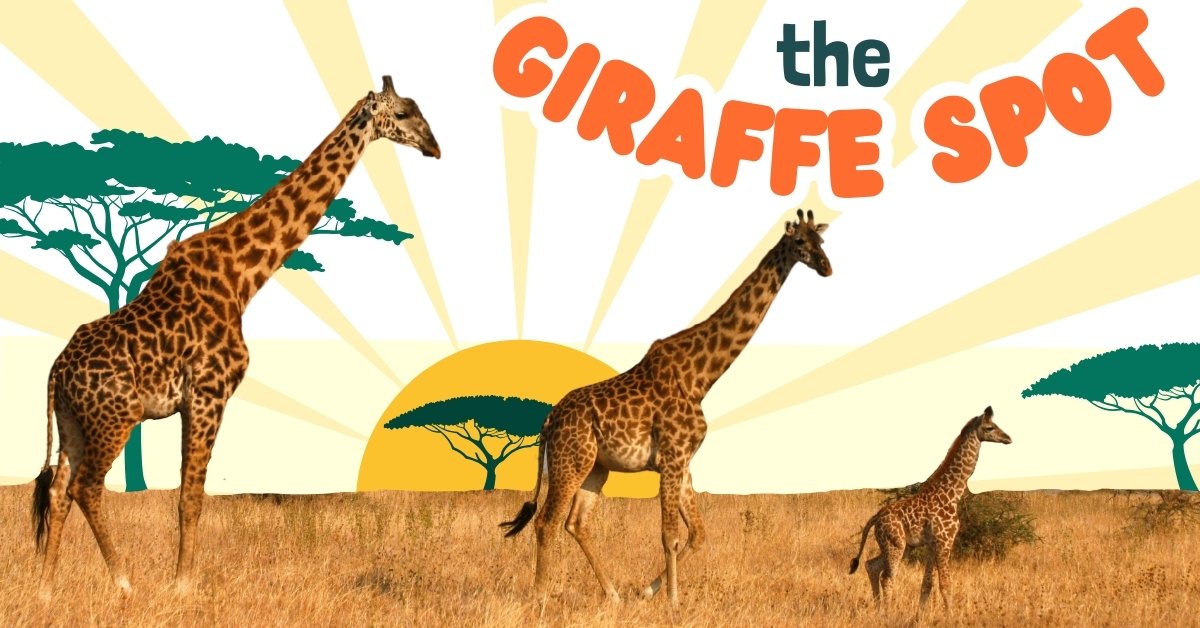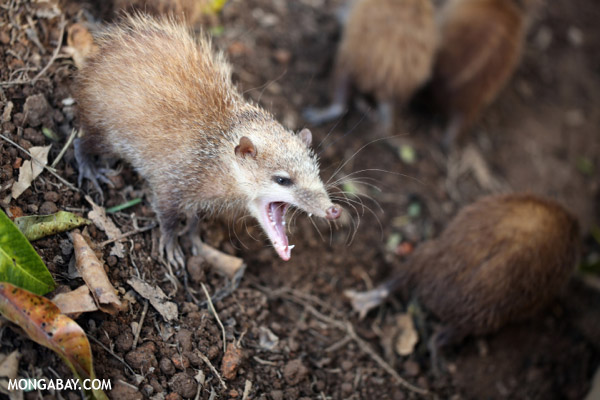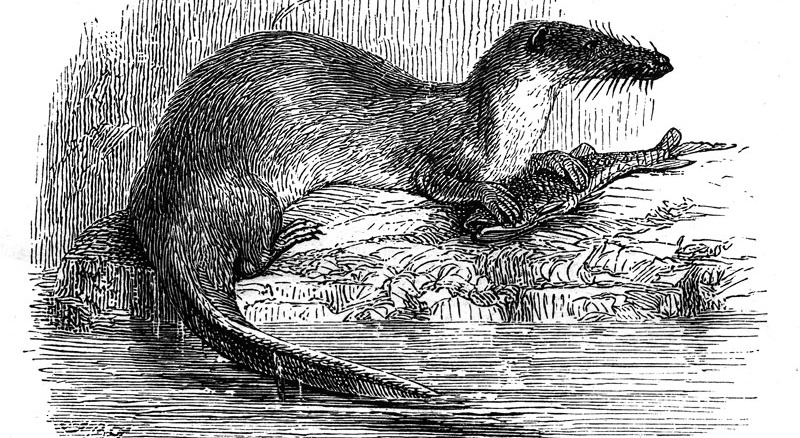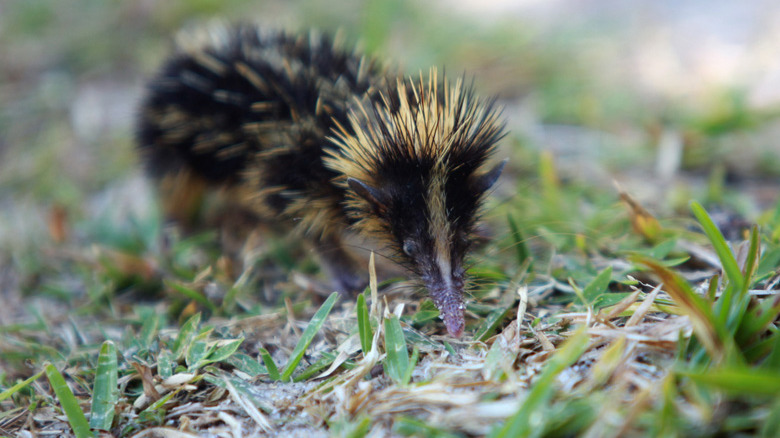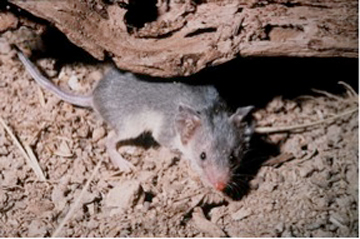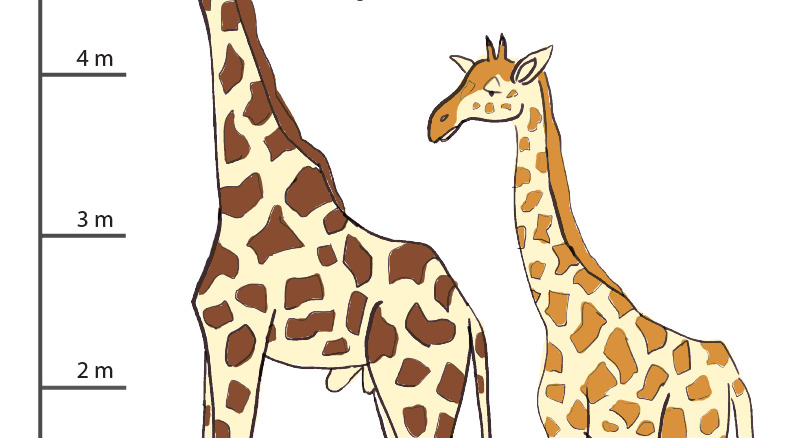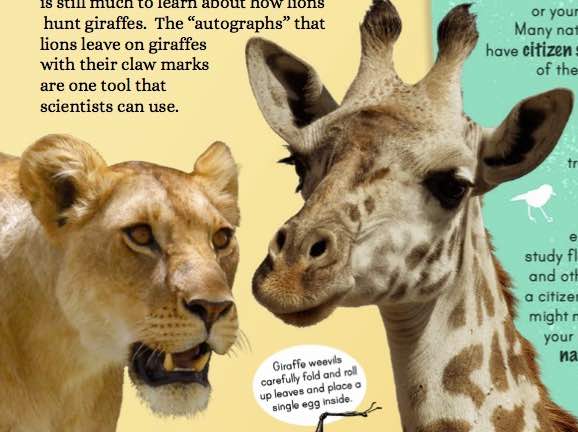My life as a giraffe kid
By Twiga, age 4, from Serengeti ecosystem, Tanzania
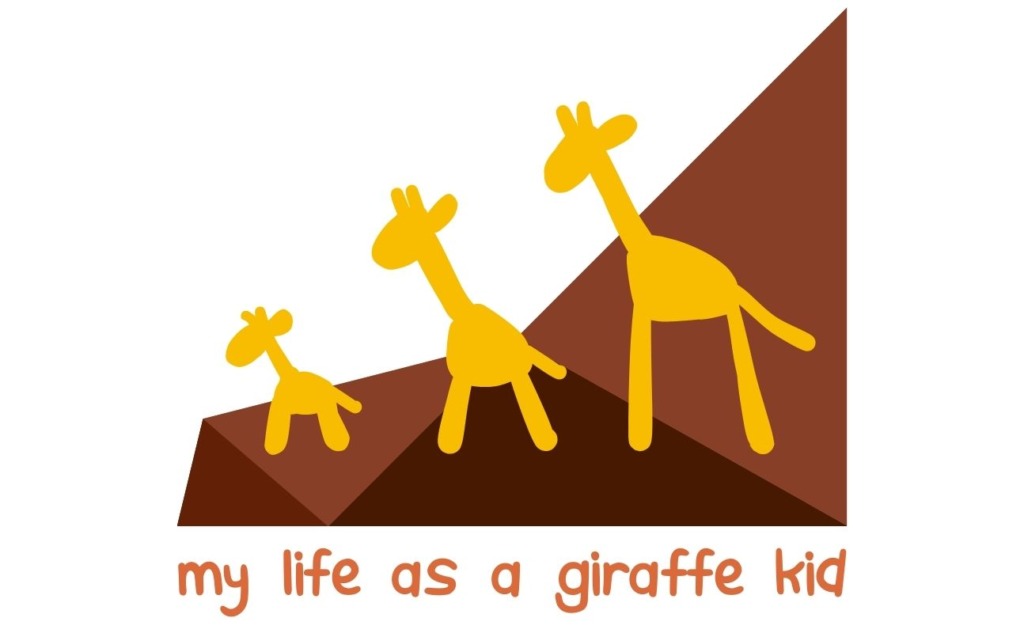
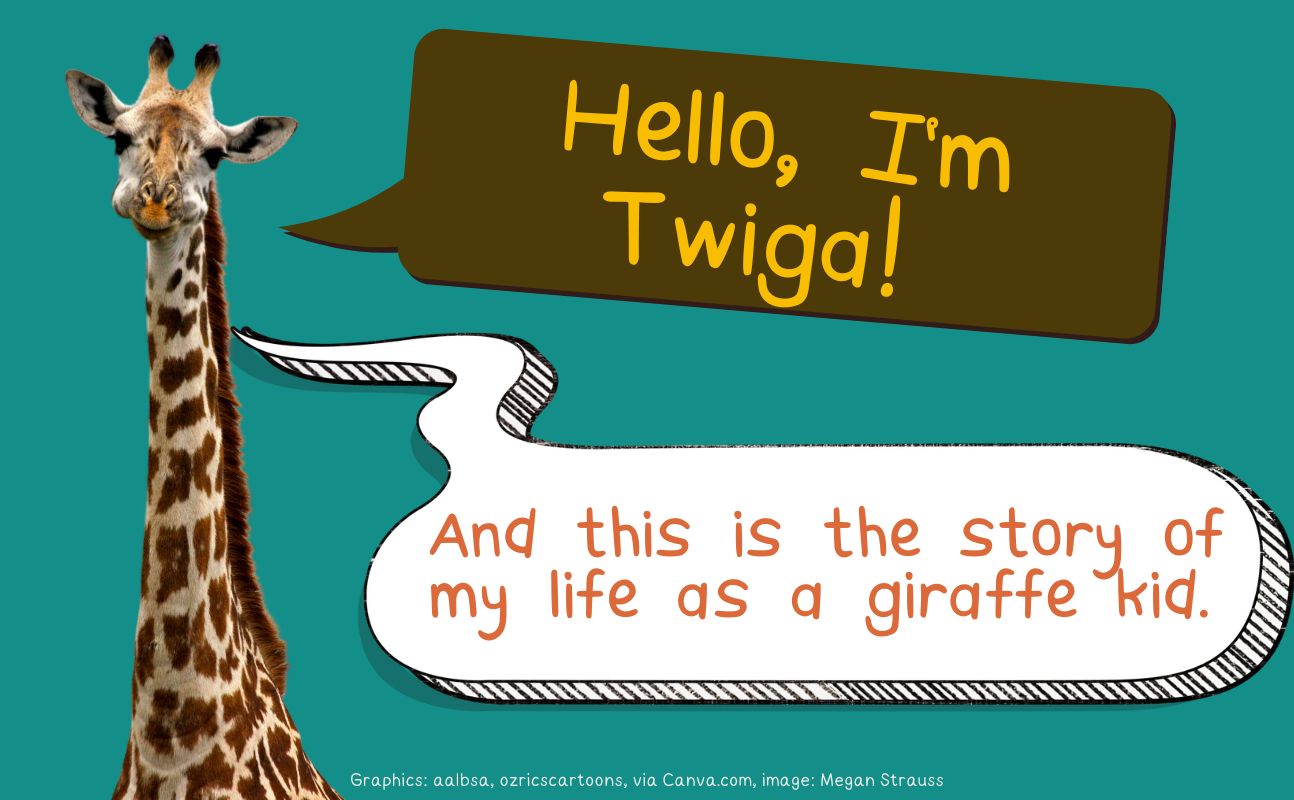
Hello, I’m Twiga the giraffe and this is my story.
I am four years old. I am a female subadult giraffe. I’m basically a teenager. I live in the beautiful Serengeti woodlands in Tanzania. Ever wondered what it’s like growing up as a giraffe kid? I’ll show you!

My hobbies are eating leaves, hanging out with friends and family, and keeping a lookout over my woodland home.
Honestly, it has been a tough road getting to age four. There have been lots of adventures — and misadventures — along the way. But it’s a good life being a giraffe.
Where it all began
Did you know we giraffes are placental mammals, just like you? That means we grow inside our mother’s uterus, nourished by an organ called the placenta.
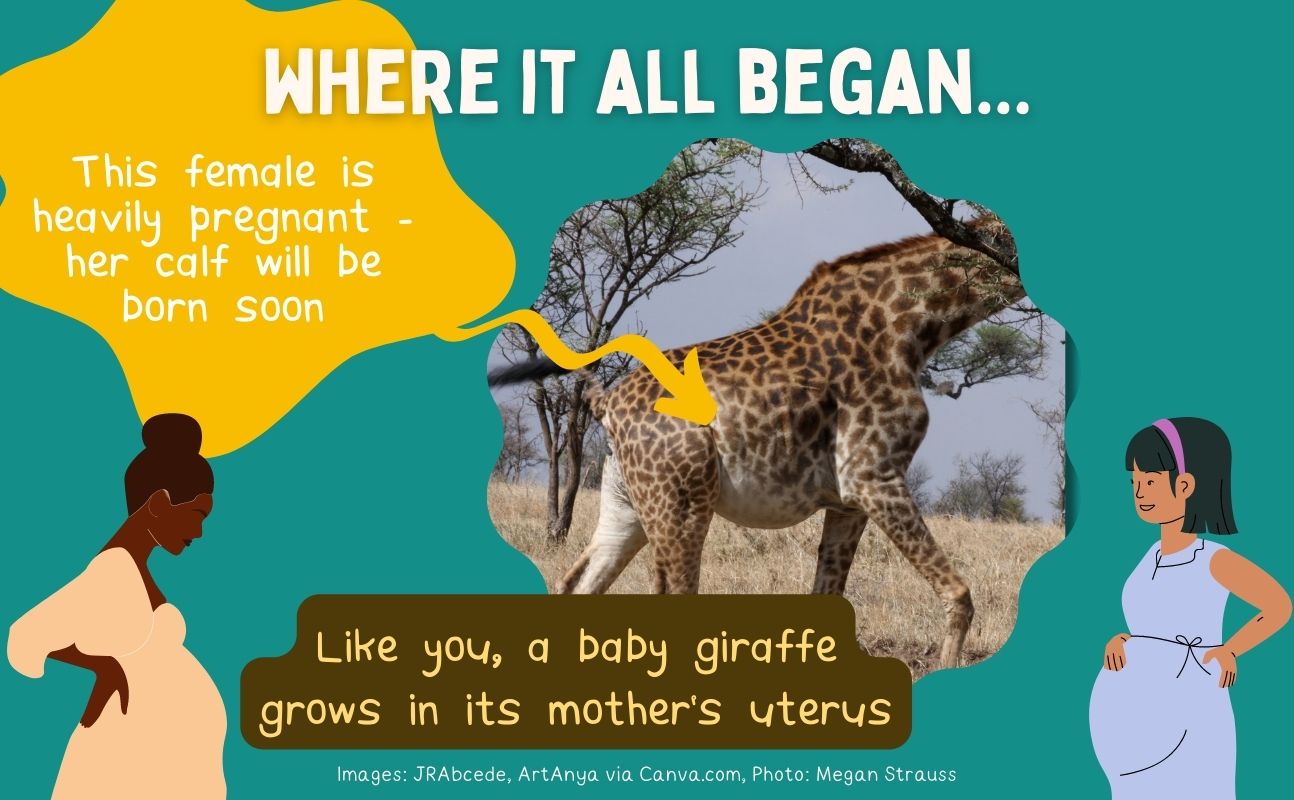
It takes a looong time — about 15 months — for a baby giraffe to develop inside Mom’s uterus. This is called the gestation period.
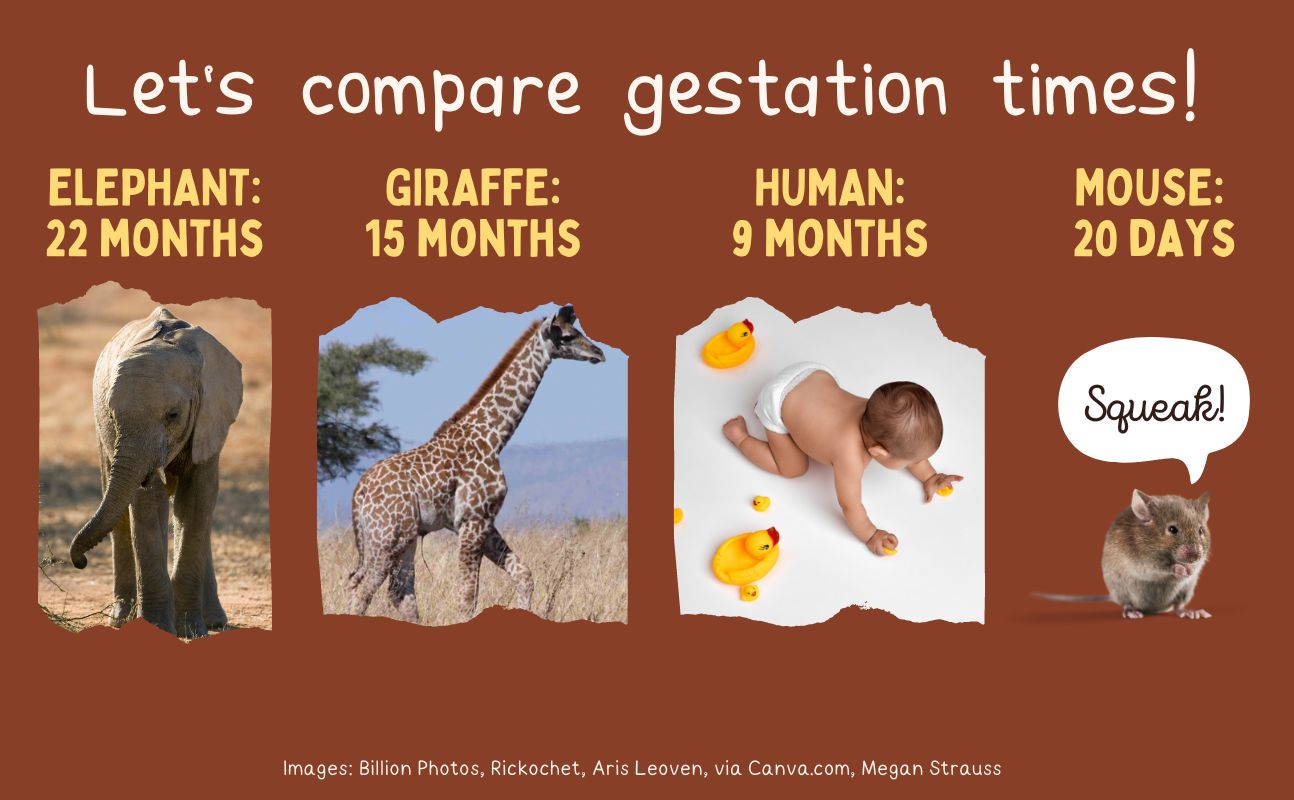
But it doesn’t take long for us to start looking like a giraffe, or so I overheard from a doctor who was visiting on safari. Apparently, you can see our long neck and legs in a sonogram after two months of growth!
And did you know that we giraffes have only seven cervical vertebrae? Those are our neck bones. Seven, that’s the same number that you have! Each of our neck vertebrae is supersized.
Born ready to face the world!
When it was time to make my big debut, Mom found a quiet, safe space away from the herd. Mom towers over 4 meters (13 feet) tall. And when I was born, I came out legs and head first and fell 2 meters (6.6 feet) to the ground with a thud. BUMP!
A couple of hours after birth, I was standing up and ready to face the world. Mom and I spent some time bonding, just the two of us.

A newborn giraffe is super cute, if I do say so myself. We have big eyes, a fluffy coat, and a short neck, (for a giraffe). Our ossicones — our special horns — are flattened. But they will pop up and grow larger as we age.
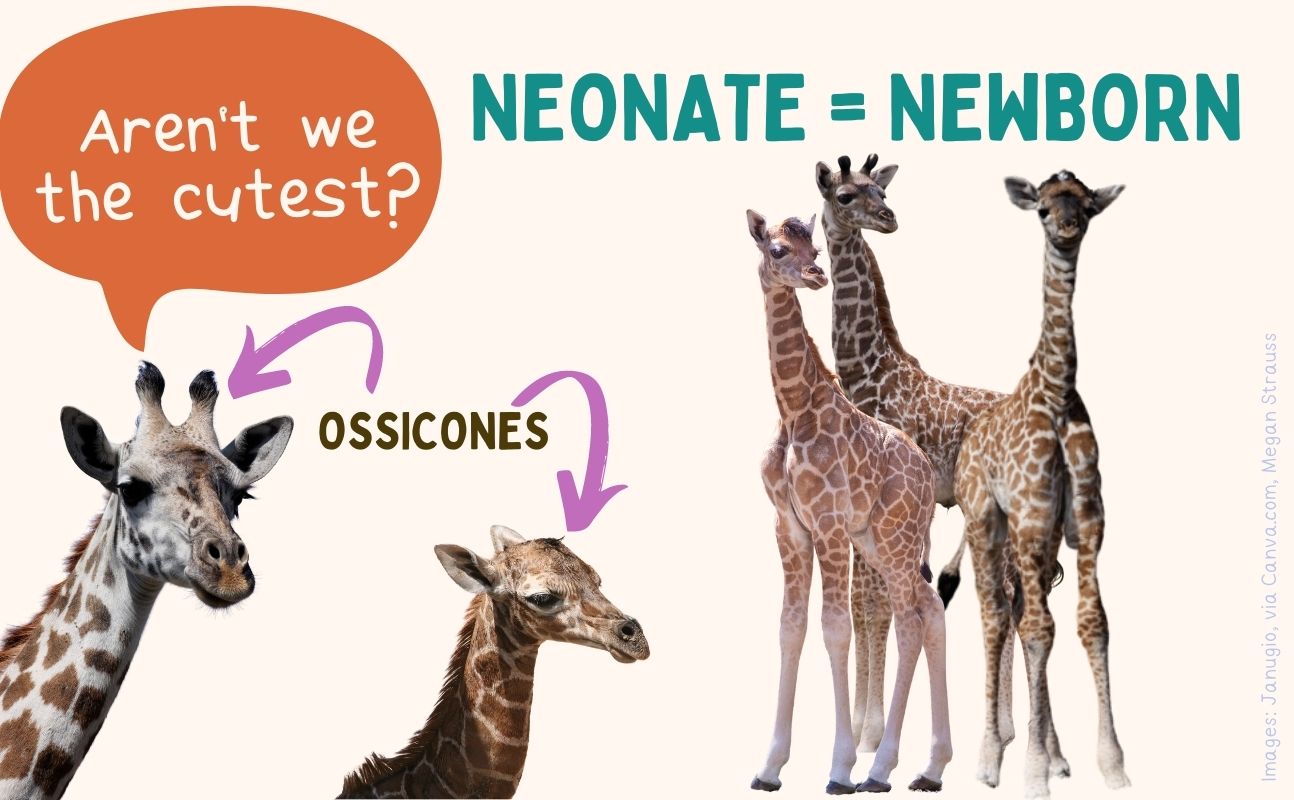
First things first, a calf has got to get some nutrients in its belly! I learned to drink rich milk from my Mom. It was delicious.
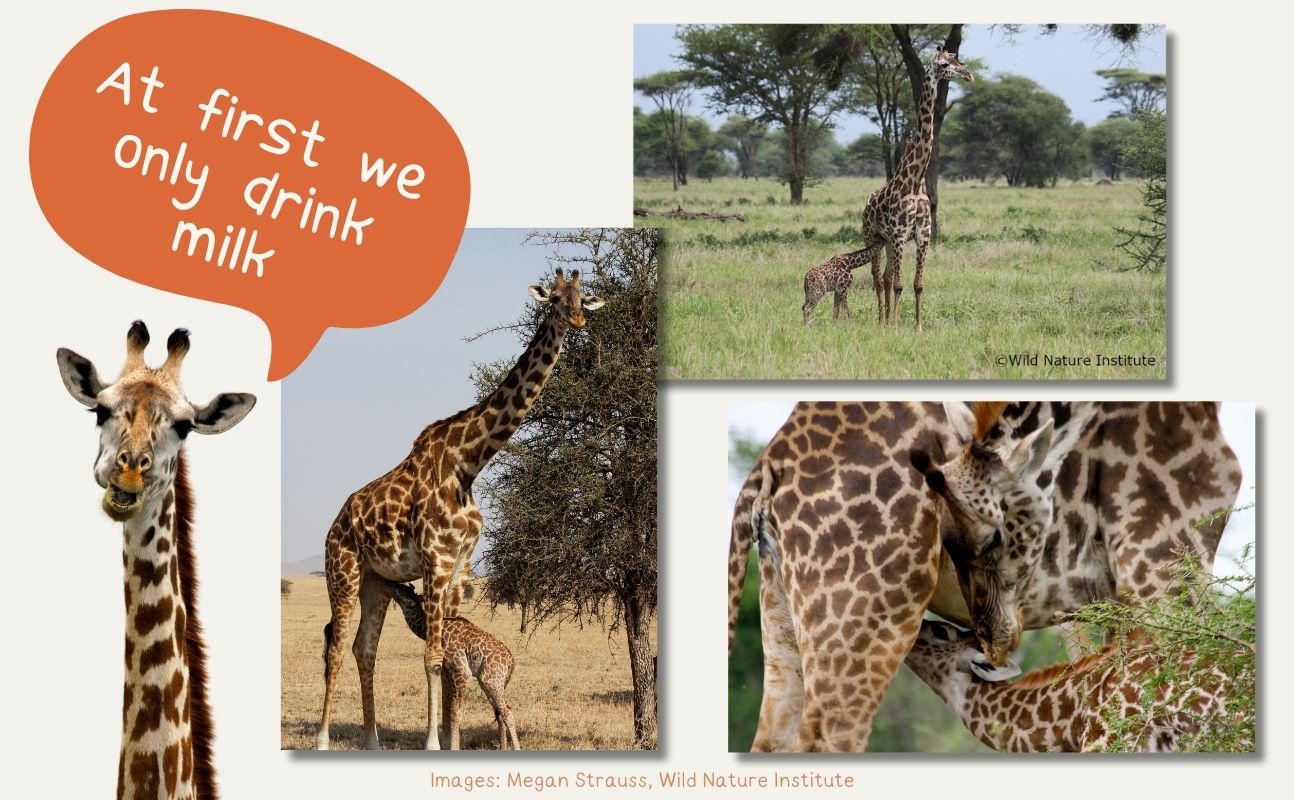
Did you know? I once saw three of my friends nursing from the same giraffe … but only one of them was her calf! That’s called allonursing. She must have been a pretty tolerant mother. Usually, a mother giraffe only gives milk to her own babies.
Did you know? Young calves drink a lot of milk: up to 8–10 liters per day! But we soon add delicious leaves to our diet. I’ll tell you more about that in a minute because plants are positively important if you’re a giraffe like me.
Meeting the gang
Shortly after I was born, Mom took me out of hiding. I met a few of my aunties and some family friends from the woodland. They were awesome. We still hang out.
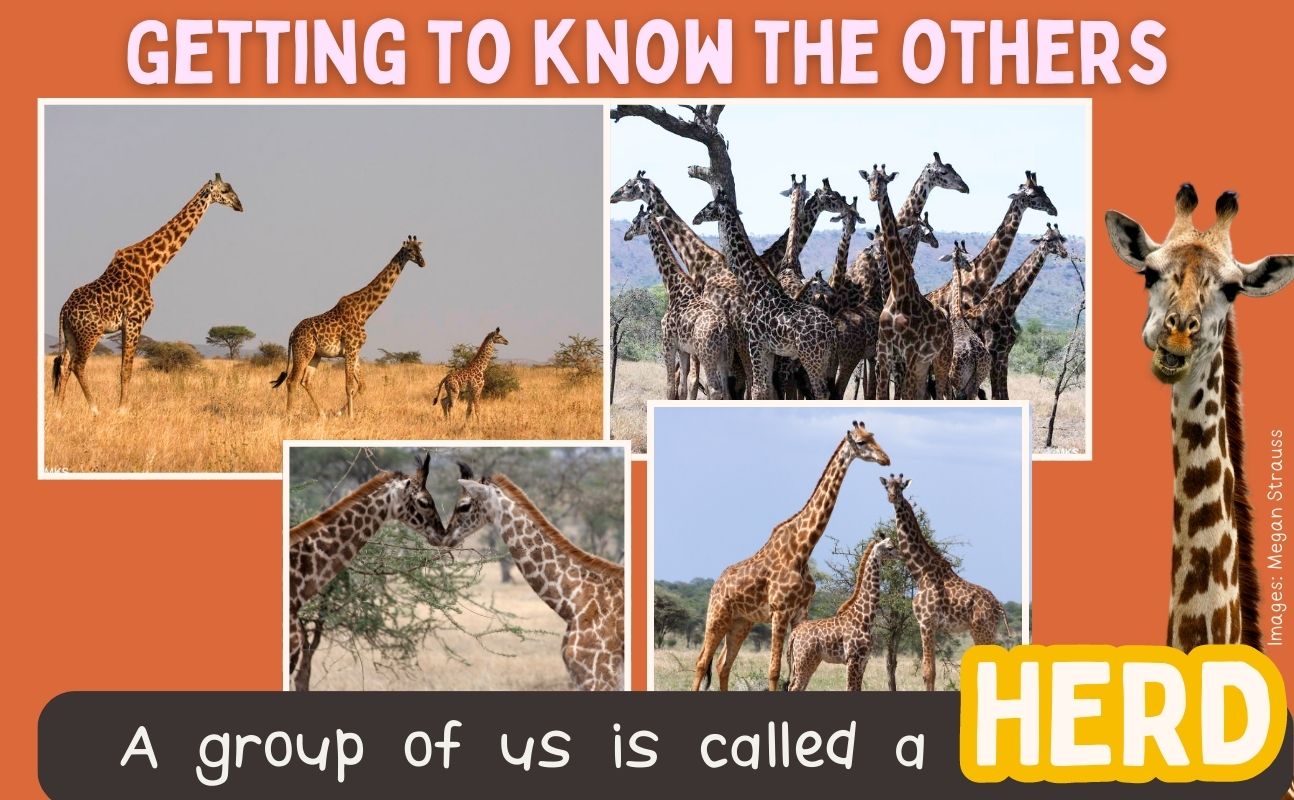
We giraffes have a fun social life. Sometimes we all hang out in a big group, especially when there is lots of fresh food to eat. Other times, we split up into small groups.
When I was small and Mom got hungry, she sometimes left me with other calves in a nursery group called a crèche. An aunty or a friend would babysit us calves. Sometimes it was just us kids looking out for ourselves.
Between you and me, there were some babysitters I liked more than others. Watch out for Aunty Miti! She never let us have any fun.
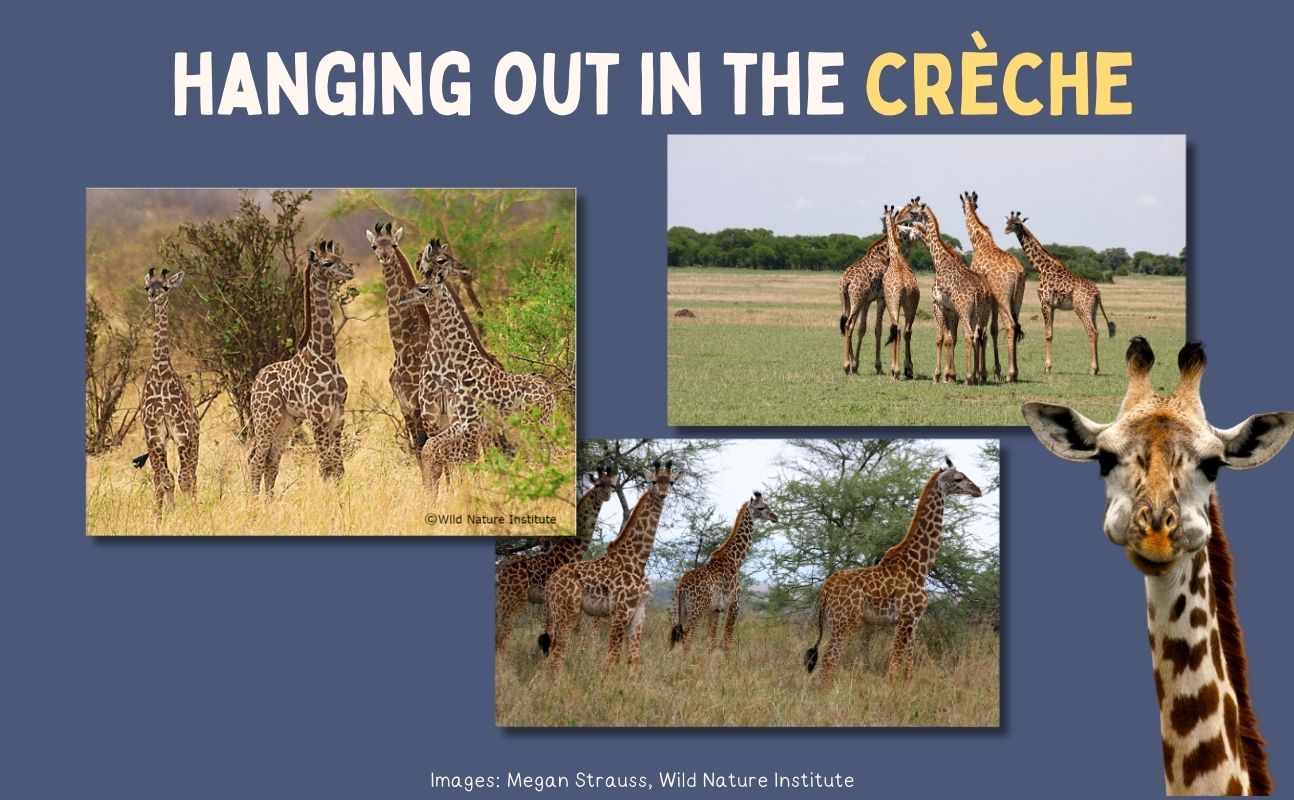
Our nursery group met in an open grassy place. It’s safer to be away from dense woodland and river banks when lions are on the prowl. Lions will ambush us if we’re not careful. Our nursery spot was a pretty safe place for us to run and play.
Lookout! Learning to avoid predators
Predators are always prowling when you’re a young giraffe. Sadly, only about half of us make it to our first birthday. Yikes, right?
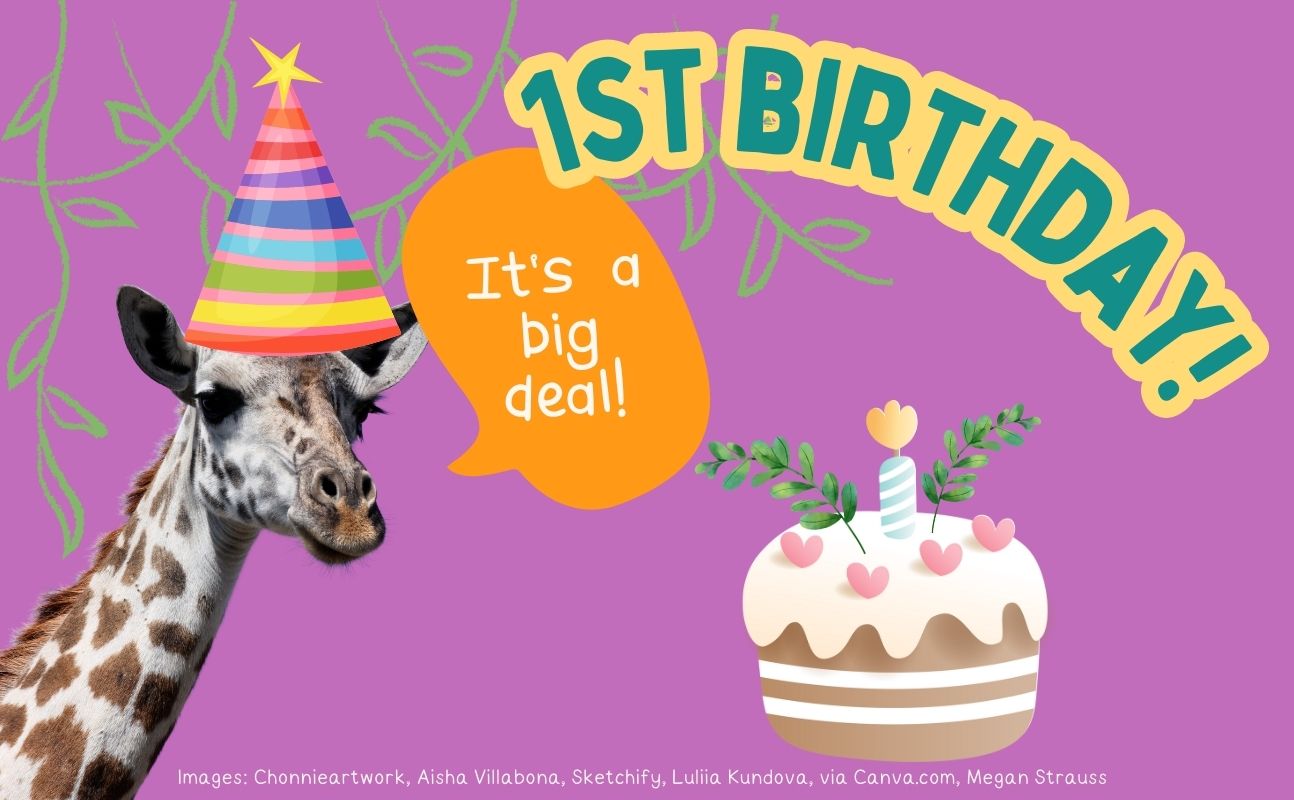
When we’re really young, we have to watch out for lions, leopards, hyenas, and occasionally even crocodiles! But lions are definitely the most dangerous to us.
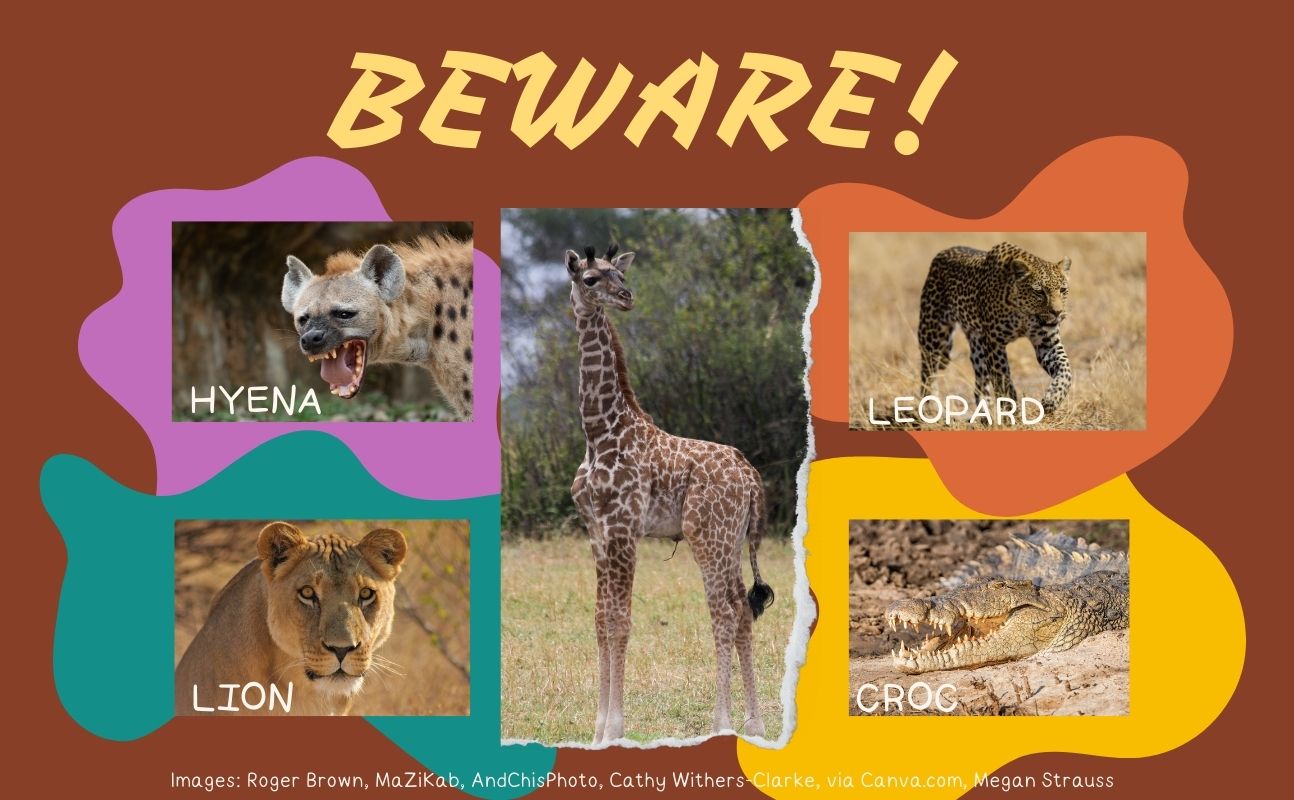
One time, when I was small, a female lion tried to attack me. It was terrifying. Mom fought back like a champ, kicking at the lion with her long legs. Another lion attacked her to distract her. Thankfully, we made it out okay, though Mom still has scars from that battle.
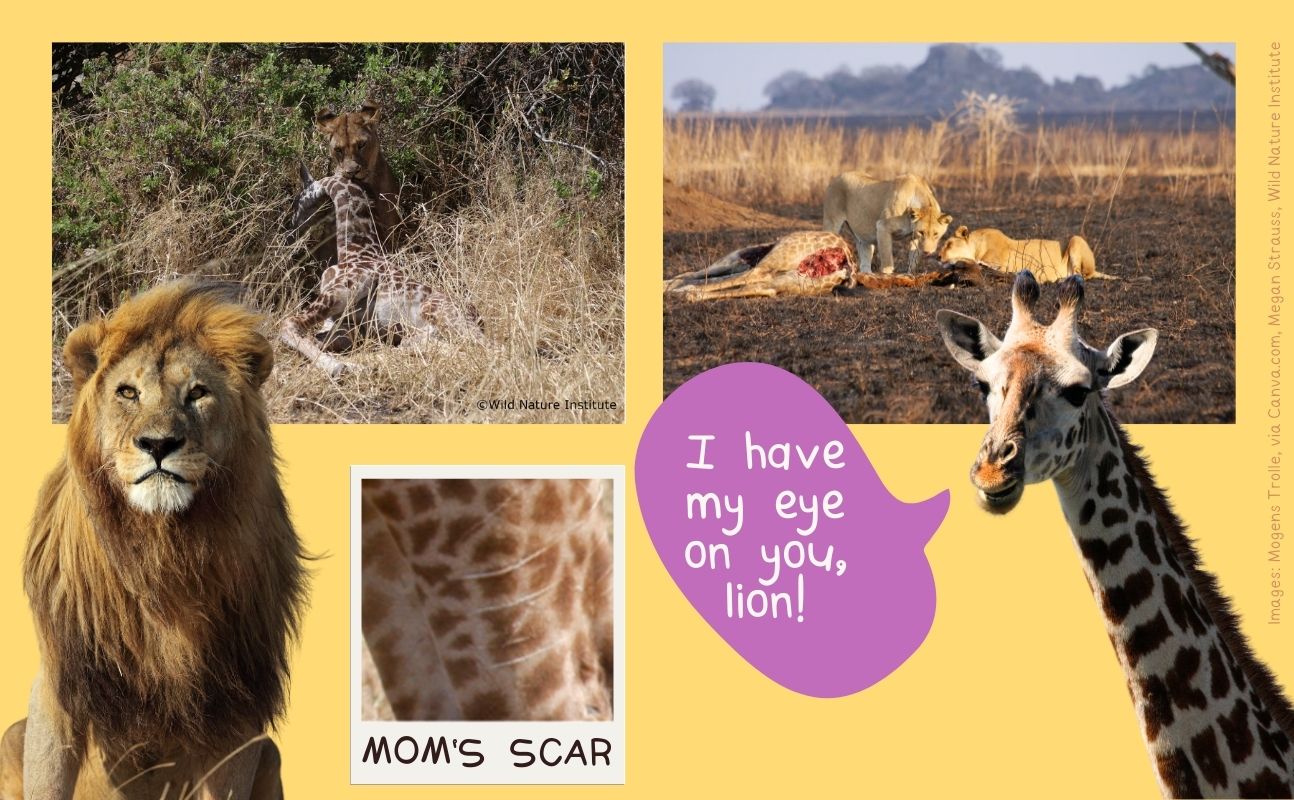
Another time, one of my friends didn’t make it. I wasn’t there, but I heard her Mom stayed near her carcass for three days. It was really sad.
Though it becomes harder for lions to hunt us as we get bigger. But they still try. Every now and then, lions kill big bull giraffes that are over 5 meters (16 feet) tall! Can you believe that?
The good thing is, when your head is up in the clouds, you can keep an eye out on the neighborhood. With our big eyes, we giraffes have great peripheral vision — that means that we can see things around ourselves well, without even moving our heads!
We are the watchtowers of the woodland. Other herbivores like zebras and gazelles look to us to see if danger is lurking.
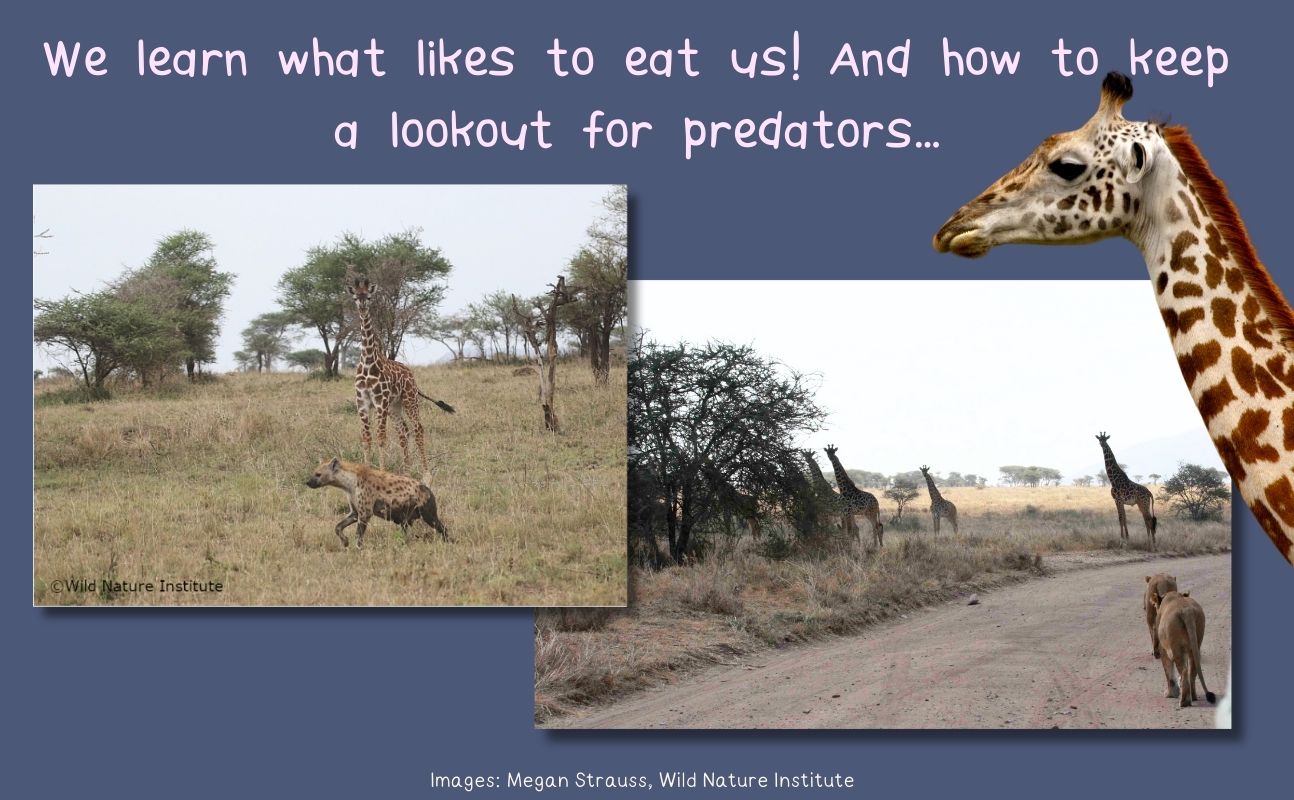
Learning about plants
My first birthday was a huge deal. I officially became a subadult.
That’s also when Mom told me the milk bar was closed. From then on I had to fill my tummy with leaves and other plant stuff. Trust me, it takes a lot of leaves and shoots to grow as tall as a single-story house. But hey, I’m good at it now!
Did you know? Adult giraffes eat about 30 kg (66 pounds) of food in a day. I’m guessing that’s a lot more than you eat.
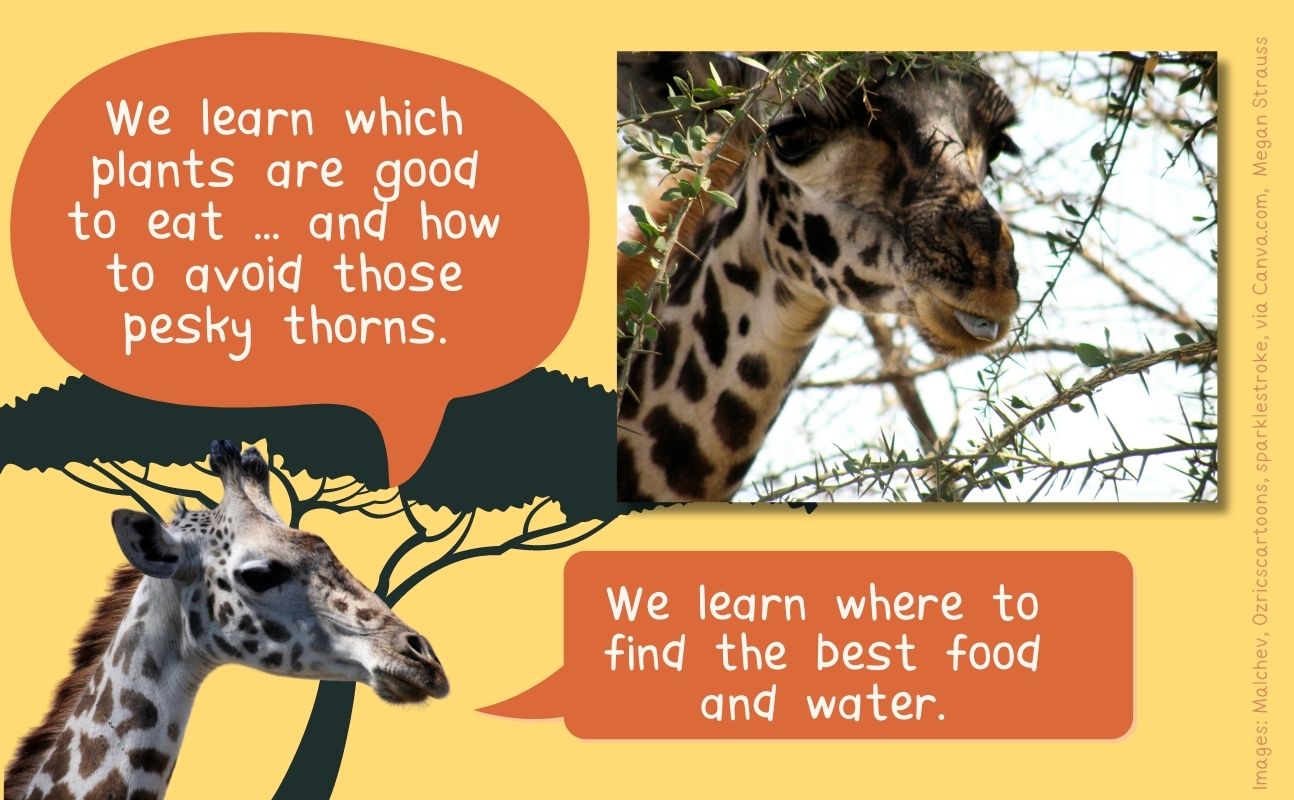
Some of the plants we eat are armed with sharp thorns. It’s a good thing we have a prehensile tongue. We learn how to use our tongue to carefully reach around thorns and pluck off juicy, sweet leaves.
I have also learned that some trees taste icky. Blech. I avoid those ones.
By watching Mom and the herd and testing things out myself, I’ve learned what’s good to eat and where to find food and also water. We do need to drink sometimes.
See how we grow
All that milk and food mean we grow quickly. Here are some pics of me and my friends from my photo album. I hope you enjoy them.

This little buddy of mine is called Mrefu. Mrefu means tall in Swahili. He grew really fast!
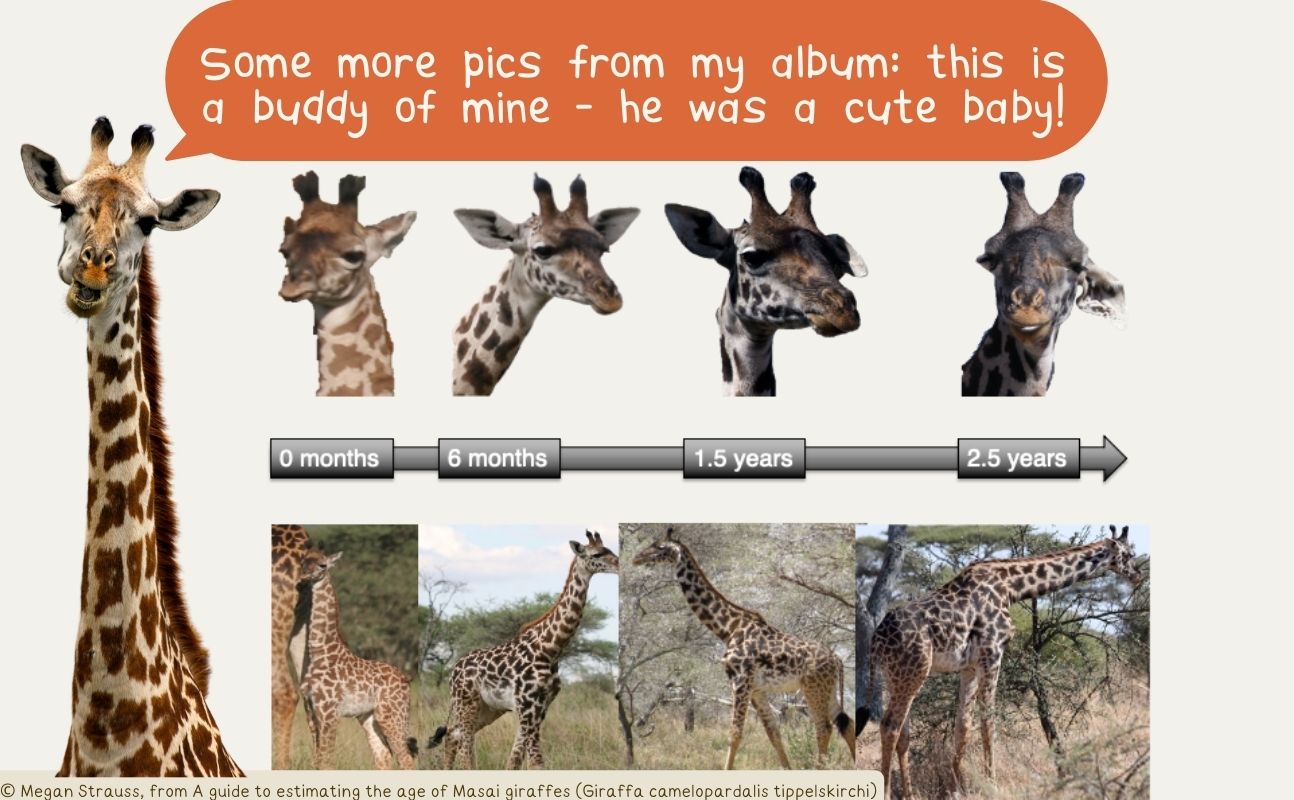
And this is me, from age two to age four. I don’t know what happened to the photos from when I was a baby. Mom thinks the cheetahs took them as a joke. Not funny, if you ask me.
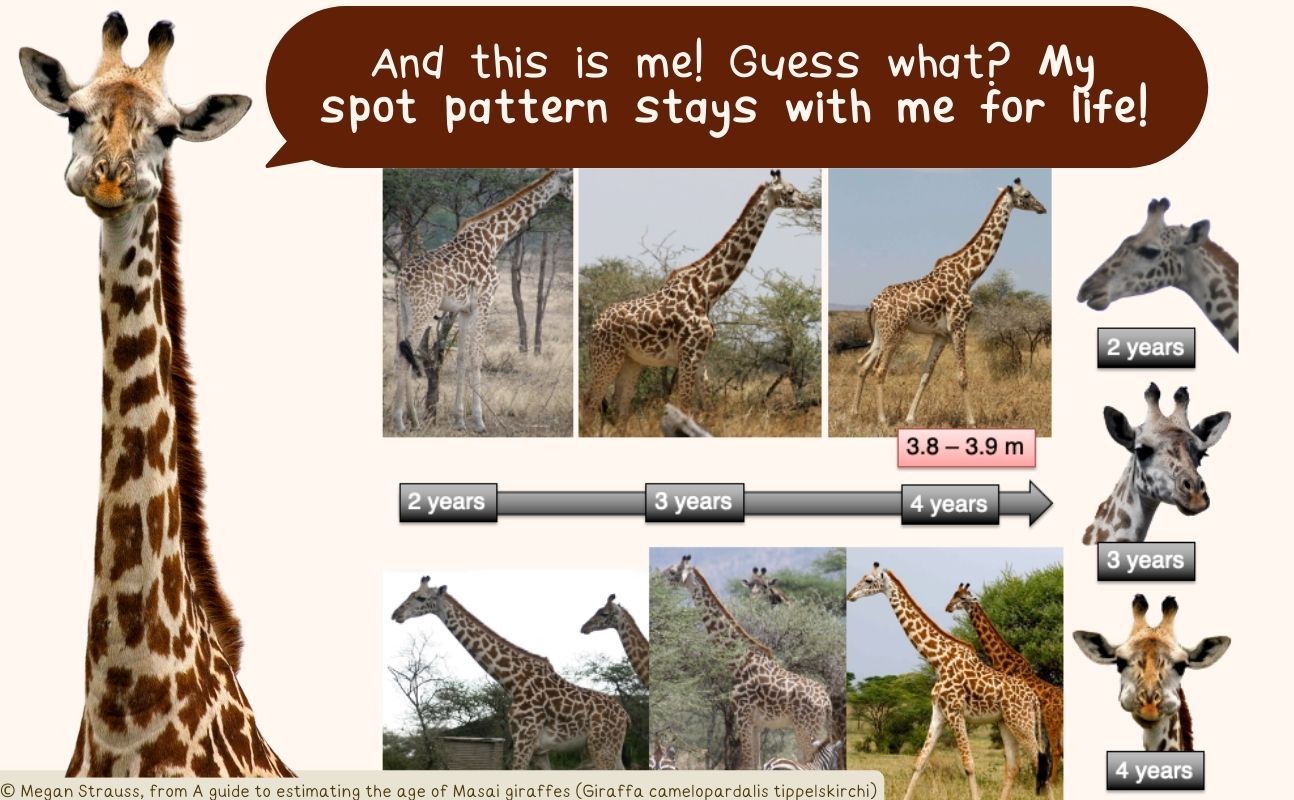
Time for adventure
When we giraffes turn one, we have a new sense of adventure. We’ve made it this far, and we are ready for more action! Plus, we’ve stopped drinking milk from Mom, so we don’t need to stay with her all the time. We start exploring our neighborhood and getting to know the neighbors.
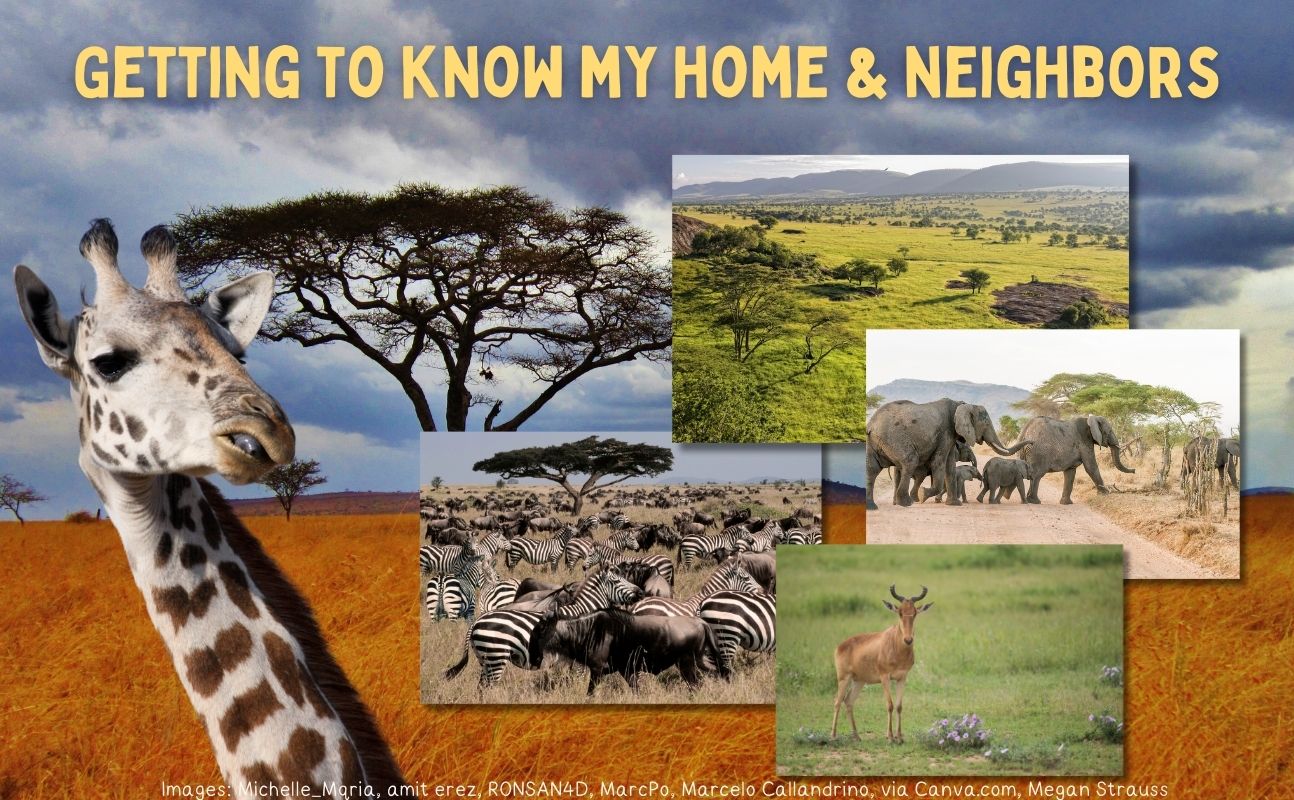
I noticed that when the boys become subadults, they start to wander off more. They hang out together in groups. They spar and play fight, especially as they get older. I don’t know what that’s all about. It looks painful.
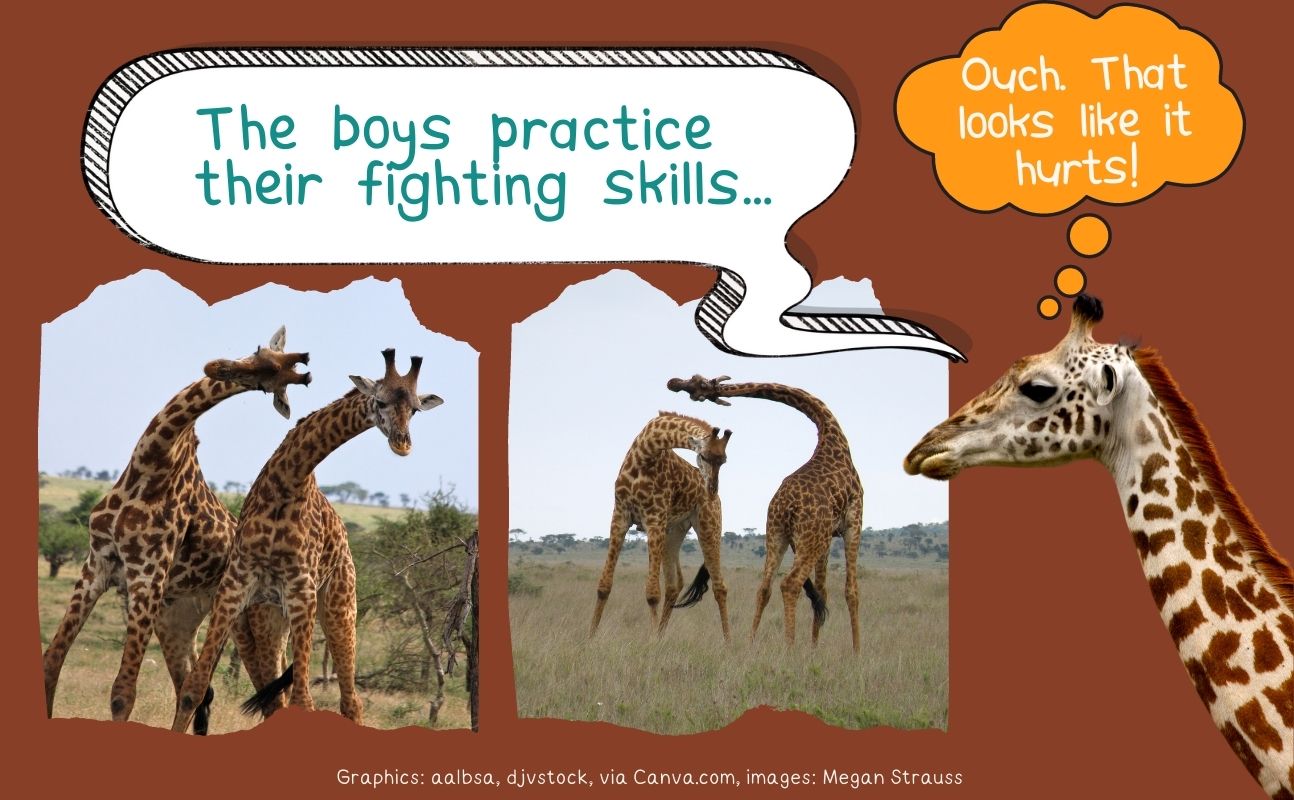
The boys still check back with us and visit their mothers. But by the time they’re four years old, they’ll probably leave Mom for good and prepare for their life as an adult. I’m four now, and some of the boys I grew up with have already left the woodland.
We girl giraffes tend to stay closer to home. Some of us will continue hanging out with Mom and our aunties and friends in the herd. But we’ll also spend some time in small groups or alone. Seriously, don’t we all need some alone time?

Soon I’ll be an adult
When I turn five, I’ll be an adult. Can you believe it? I’ll throw a big party and supply the best leaves in the neighborhood!
I’ve learned so much as a kid, and that’s no exaggeration. I can socialize with the changing herd. I can find good food to eat and water when I need it. I am also quite good at avoiding predators.
So, what’s up next for me? I don’t know exactly, but from the group chatter it sounds like I’ll soon start breeding. And one day I’ll probably be a mom too.
For now, I’m content to continue exploring my neighborhood, meeting the other animals, and filling up on tasty leaves.
And lions, you beware! I have my eye(s) on you.
Well, that is the story of my life as a giraffe kid. If you ever come to my Serengeti woodland home, keep a lookout for me. You can recognize me from my spot markings.
Text & graphics by Megan Strauss.
Scientific consultants: David Brown, Monica Bond, Jason Pootoolal.
With thanks to Wild Nature Institute for photographs.
This story was created as part of World Giraffe Week celebrations.
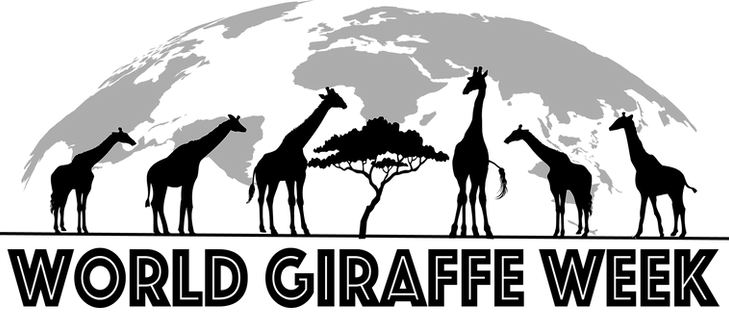
References:
Bond, Monica & Lee, Derek. (2019). Simultaneous multiple‐calf allonursing by a wild Masai giraffe. African Journal of Ecology. 58. 10.1111/aje.12673.
Strauss, Megan & Raw, Zoe. (2013). Giraffe mothers in East Africa linger for days near the remains of their dead calves. African Journal of Ecology. 51. 10.1111/aje.12040.
Strauss, M.K.L. & Packer, C. (2013), Lion predation on giraffes. J Zool, 289: 134-142. https://doi.org/10.1111/j.1469-7998.2012.00972.x
Giraffe. Biology, Behaviour and Conservation Dagg, Anne Innis. Cambridge University Press (2014).
